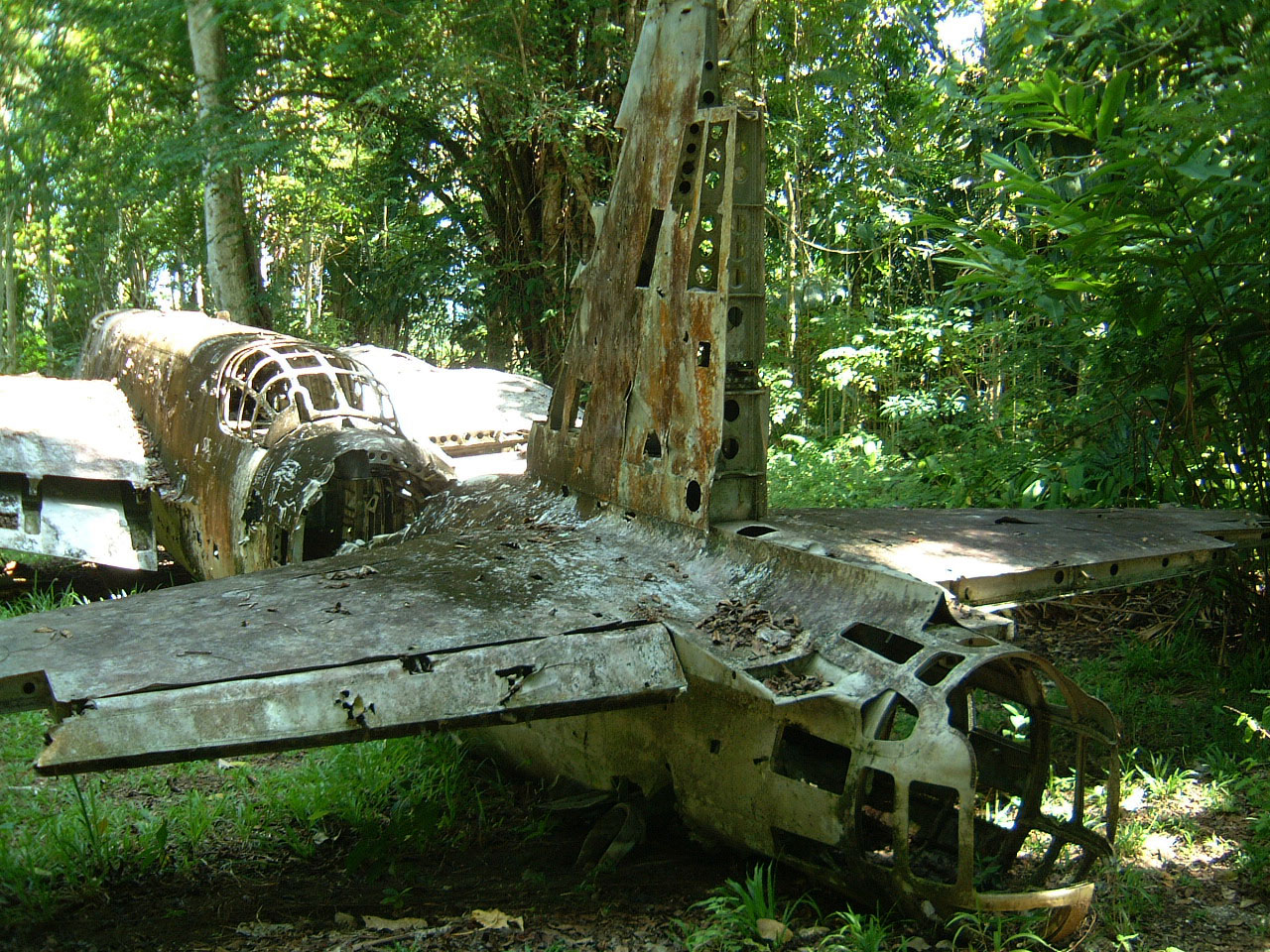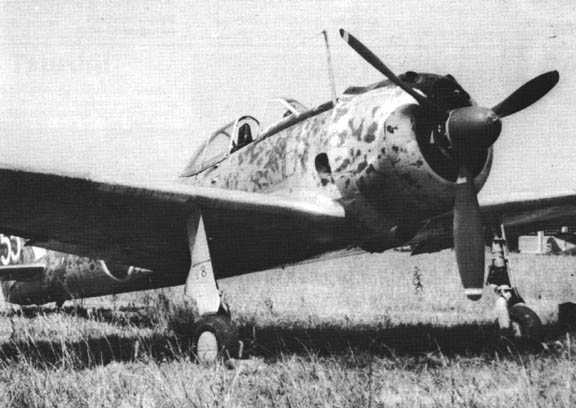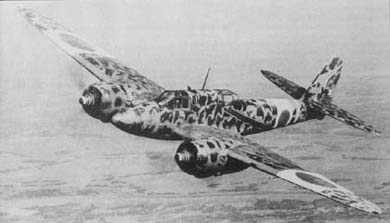|
Fourth Air Army (Japan)
The Fourth Air Army (Japanese: 第4航空軍, romanized: Kōkū gun) was a land-based aviation force of the Imperial Japanese Army. Formed in Rabaul in June 1943, consisting of the 6th and 7th Air Divisions (Hiko Shidan). The air army was responsible for covering the Solomon Islands, Dutch New Guinea and the Territories of Papua and New Guinea areas of operations. The headquarters was at Rabaul. Disestablished in January 1945. Origins In August 1942, as a result of the loss in the Battle of the Tenaru at Guadalcanal and significant losses of aircraft based at Rabaul, the Imperial Japanese Navy requested the Army to send reinforcements for the air effort in the Solomon's and New Guinea. This request was initially declined as the army considered its forces were spread too thinly throughout occupied territories. The defeat of the Kawaguchi Detachment in the Battle of Edson's Ridge at the beginning of September brought about a change in the army's stance with a proposal being put fo ... [...More Info...] [...Related Items...] OR: [Wikipedia] [Google] [Baidu] |
Imperial Japanese Army
The was the official ground-based armed force of the Empire of Japan from 1868 to 1945. It was controlled by the Imperial Japanese Army General Staff Office and the Ministry of the Army, both of which were nominally subordinate to the Emperor of Japan as supreme commander of the army and the Imperial Japanese Navy. Later an Inspectorate General of Aviation became the third agency with oversight of the army. During wartime or national emergencies, the nominal command functions of the emperor would be centralized in an Imperial General Headquarters (IGHQ), an ad hoc body consisting of the chief and vice chief of the Army General Staff, the Minister of the Army, the chief and vice chief of the Naval General Staff, the Inspector General of Aviation, and the Inspector General of Military Training. History Origins (1868–1871) In the mid-19th century, Japan had no unified national army and the country was made up of feudal domains (''han'') with the Tokugawa shogunate (''b ... [...More Info...] [...Related Items...] OR: [Wikipedia] [Google] [Baidu] |
Kumaichi Teramoto
was a Japanese Lieutenant General during World War II. Career Kumaichi Teramoto joined the Imperial Japanese Army in 1910, being commissioned into the infantry. In 1921, he graduated the Japanese War College and became a colonel in the IJA. Even though he had signed up for the ground forces, in 1933 he was given command of the 8th Air Regiment, and by 1940, he was a Major General commanding the 2nd Air Division in Manchukuo. When war broke out with the United States in December 1941, he held various air staff assignments. From May 1943 to July 1943 he commanded the 1st Air Army. In July 1943, he was assigned command of the 4th Air Army Fourth or the fourth may refer to: * the ordinal form of the number 4 * ''Fourth'' (album), by Soft Machine, 1971 * Fourth (angle), an ancient astronomical subdivision * Fourth (music), a musical interval * ''The Fourth'' (1972 film), a Sovie ..., which was virtually eliminated during the US Air Force's bombing of Wewak Island, where he ... [...More Info...] [...Related Items...] OR: [Wikipedia] [Google] [Baidu] |
Nakajima Ki-49
The Nakajima Ki-49 ''Donryu'' (呑龍, "Storm Dragon")Francillon, 1970, p.223 was a twin-engine Japanese World War II heavy bomber. It was designed to carry out daylight bombing missions, without the protection of escort fighters. Consequently, while its official designation, Army Type 100 Heavy Bomber, was accurate in regard to its formidable defensive armament and armor, these features restricted the Ki-49 to payloads comparable to those of lighter medium bombers – the initial production variant could carry only of bombs. A mid-wing, cantilever monoplane of all-metal construction, the Ki-49 was one of the first Japanese aircraft fitted with a retractable tailwheel. During World War II, it was known to the Allies by the reporting name "Helen". Development The Ki-49 was designed to replace the Mitsubishi Ki-21 ("Sally"), which entered service with the Imperial Japanese Army Air Force in 1938. Learning from service trials of the Ki-21, the Army realized that however advanc ... [...More Info...] [...Related Items...] OR: [Wikipedia] [Google] [Baidu] |
Mitsubishi Ki-21
The ( Allied reporting name: "Sally" /"Gwen") was a Japanese heavy bomber during World War II. It began operations during the Second Sino-Japanese War participating in the Nomonhan Incident, and in the first stages of the Pacific War, including the Malayan, Burmese, Dutch East Indies and New Guinea Campaigns. It was also used to attack targets as far-flung as western China, India and northern Australia. Design and development In 1936, the Imperial Japanese Army Air Service issued a requirement for a new heavy bomber to replace both the Ki-20 (Army Type 92 Heavy Bomber) and the Ki-1 (Army Type 93 Heavy Bomber). The design called for a crew of at least four, top speed of , endurance of at least five hours, and a bombload of . The design parameters were very ambitious, and few twin-engine bombers anywhere in the world could exceed such performance at that time. Both Mitsubishi and Nakajima were asked to build two prototypes each, a further proposal from Kawasaki being rejec ... [...More Info...] [...Related Items...] OR: [Wikipedia] [Google] [Baidu] |
Mitsubishi Ki-46
The Mitsubishi Ki-46 was a twin-engine reconnaissance aircraft used by the Imperial Japanese Army in World War II. Its Army ''Shiki'' designation was Type 100 Command Reconnaissance Aircraft (); the Allied brevity code name was "Dinah". Development and design On 12 December 1937, the Imperial Japanese Army Air Force issued a specification to Mitsubishi for a long-range strategic reconnaissance aircraft to replace the Mitsubishi Ki-15. The specification demanded an endurance of six hours and sufficient speed to evade interception by any fighter in existence or development, but otherwise did not constrain the design by a team led by Tomio Kubo (a 1931 graduate from the Aeronautical Section of the Faculty of Engineering at Tokyo Imperial University) whose aesthetics are very significantly infused to the aircraft. The resulting design was a twin-engined, low-winged monoplane with a retractable tailwheel undercarriage. It had a small diameter oval fuselage which accommodated a crew o ... [...More Info...] [...Related Items...] OR: [Wikipedia] [Google] [Baidu] |
Kawasaki Ki-61
The Kawasaki Ki-61 ''Hien'' (飛燕, "flying swallow") is a Japanese World War II fighter aircraft. Used by the Imperial Japanese Army Air Service, it was designated the "Army Type 3 Fighter" (三式戦闘機). Allied intelligence initially believed Ki-61s were Messerschmitt Bf 109s and later an Italian Macchi C.202, which led to the Allied reporting name of "Tony", assigned by the United States War Department. The design originated as a variant of the Kawasaki Ki-60, which never entered production. The Ki-61 became the only mass-produced Japanese fighter of the war to use a liquid-cooled inline V engine. Over 3,000 Ki-61s were produced. Initial prototypes saw action over Yokohama during the Doolittle Raid on 18 April 1942, and continued to fly combat missions throughout the war. Design and development The Ki-61 was designed by Takeo Doi and his deputy Shin Owada in response to a late 1939 tender by the ''Koku Hombu'' for two fighters, each to be built around the Da ... [...More Info...] [...Related Items...] OR: [Wikipedia] [Google] [Baidu] |
Nakajima Ki-43
The Nakajima Ki-43 ''Hayabusa'' (, "Peregrine falcon", "Army Type 1 Fighter" ) is a single-engine land-based tactical fighter used by the Imperial Japanese Army Air Service in World War II. The Allied reporting name was "Oscar", but it was often called the "Army Zero" by American pilots because it bore a certain resemblance to the Mitsubishi A6M Zero, the Imperial Japanese Navy's counterpart to the Ki-43. Both aircraft had generally similar layout and lines, and also used essentially the same Nakajima Sakae radial engine, with similar round cowlings and bubble-type canopies (the ''Oscar'''s being distinctly smaller and having much less framing than the A6M). While relatively easy for a trained eye to tell apart with the "finer" lines of the Ki-43's fuselage – especially towards the tail – and more tapered wing planform; in the heat of battle, given the brief glimpses and distraction of combat, Allied aviators frequently made mistakes in enemy aircraft identification in t ... [...More Info...] [...Related Items...] OR: [Wikipedia] [Google] [Baidu] |
Kawasaki Ki-45
The Kawasaki Ki-45 ''Toryu'' (屠龍, "Dragonslayer") was a two-seat, twin-engine heavy fighter used by the Imperial Japanese Army in World War II. The army gave it the designation "Type 2 Two-Seat Fighter"; the Allied reporting name was "Nick". Originally serving as a long-range escort-fighter, the design — as with most heavy fighters of the period — fell prey to smaller, lighter, more agile single-engine fighters. As such, the Ki-45 instead served as a day and nighttime interceptor and strike-fighter. Design and development In response to the rapid emergence in Europe of twin-engine heavy fighters such as the Messerschmitt Bf 110, the army ordered development of a twin-engine, two-seat fighter in 1937, and assigned the proposal by Kawasaki Shipbuilding the designation of ''Ki-38''. This only went as far as a mock up, but by December of that year the army ordered a working prototype as the ''Ki-45'', which first flew in January 1939. Results from the test flights, how ... [...More Info...] [...Related Items...] OR: [Wikipedia] [Google] [Baidu] |
First Air Army
__NOTOC__ The 1st Air Army (russian: 1-я воздушная армия) was an Air Army in the Soviet Air Force which served during World War II. It was formed on May 10, 1942, within the Soviet Western Front, and renamed the 26th Air Army on January 10, 1949, in the Belorussian Military District. After the war, it was reformed on July 1, 1957, and was active until 1998. Second World War When it was formed, the 1st Air Army was made up of two fighter aviation divisions (with four fighter aviation regiments each), two mixed aviation divisions (with two fighter aviation regiments, two assault aviation regiments and one bombing regiment each) a training aviation regiment, a long-range reconnaissance aviation regiment, a communications squadron, and a night close-range bombing aviation regiment. Structure 1942 May 10, 1942: *201st Fighter Aviation Division *202nd Fighter Aviation Division *203rd Fighter Aviation Division *214th Assault Aviation Division *215th Mixed Aviation D ... [...More Info...] [...Related Items...] OR: [Wikipedia] [Google] [Baidu] |
Hajime Sugiyama
was a Japanese field marshal and one of the leaders of Japan's military throughout most of World War II. As Army Minister in 1937, Sugiyama was a driving force behind the launch of hostilities against China in retaliation for the Marco Polo Bridge Incident. After being named the Army’s Chief of Staff in 1940, he became a leading advocate for expansion into Southeast Asia and preventive war against the United States. Upon the outbreak of hostilities in the Pacific, Sugiyama served as the army’s commander-in-chief until his removal by Prime Minister Hideki Tojo in February 1944. Following Tojo's ouster in July 1944, he once again held the post of Army Minister in Kuniaki Koiso's cabinet until its dissolution in April 1945. Ten days after Japan's surrender on 2 September 1945, he committed suicide. Early life and career Born to a former ''samurai'' family from Kokura (now part of Kitakyushu City), Fukuoka Prefecture, Sugiyama graduated from the 12th class of the Imperial J ... [...More Info...] [...Related Items...] OR: [Wikipedia] [Google] [Baidu] |
Hirohito
Emperor , commonly known in English-speaking countries by his personal name , was the 124th emperor of Japan, ruling from 25 December 1926 until his death in 1989. Hirohito and his wife, Empress Kōjun, had two sons and five daughters; he was succeeded by his fifth child and eldest son, Akihito. By 1979, Hirohito was the only monarch in the world with the title "emperor". He was the longest-reigning historical Japanese emperor and one of the longest-reigning monarchs in the world. Hirohito was the head of state under the Meiji Constitution during Japan's imperial expansion, militarization, and involvement in World War II. Japan waged a war across Asia in the 1930s and 40s in the name of Hirohito, who was revered as a god. After Japan's surrender, he was not prosecuted for war crimes, as General Douglas MacArthur thought that an ostensibly cooperative emperor would help establish a peaceful Allied occupation, and help the U.S. achieve their postwar objectives. His role d ... [...More Info...] [...Related Items...] OR: [Wikipedia] [Google] [Baidu] |
Hideki Tojo
Hideki Tojo (, ', December 30, 1884 – December 23, 1948) was a Japanese politician, general of the Imperial Japanese Army (IJA), and convicted war criminal who served as prime minister of Japan and president of the Imperial Rule Assistance Association for most of World War II. He assumed several more positions including chief of staff of the Imperial Army before ultimately being removed from power in July 1944. During his years in power, his leadership was marked by extreme state-perpetrated violence in the name of Japanese ultranationalism, much of which he was personally involved in. Hideki Tojo was born on December 30, 1884, to a relatively low-ranking samurai family in the Kōjimachi district of Tokyo. He began his career in the Army in 1902 and steadily rose through the ranks to become a general by 1934. In March 1937, he was promoted to chief of staff of the Kwantung Army whereby he led military operations against the Chinese in Inner Mongolia and the Chahar-Suiy ... [...More Info...] [...Related Items...] OR: [Wikipedia] [Google] [Baidu] |






